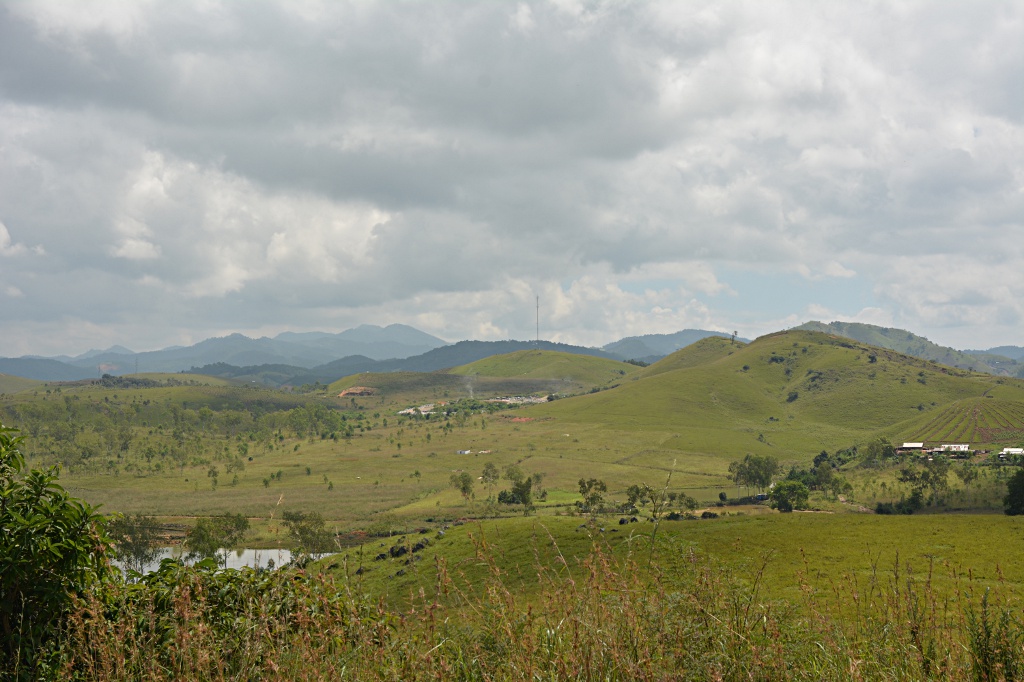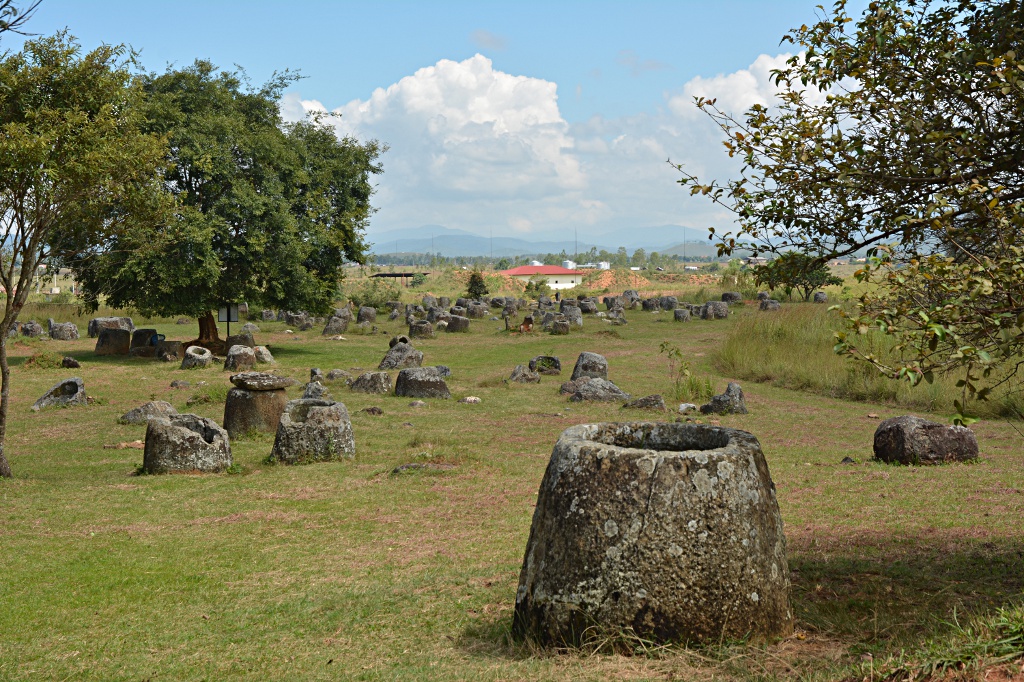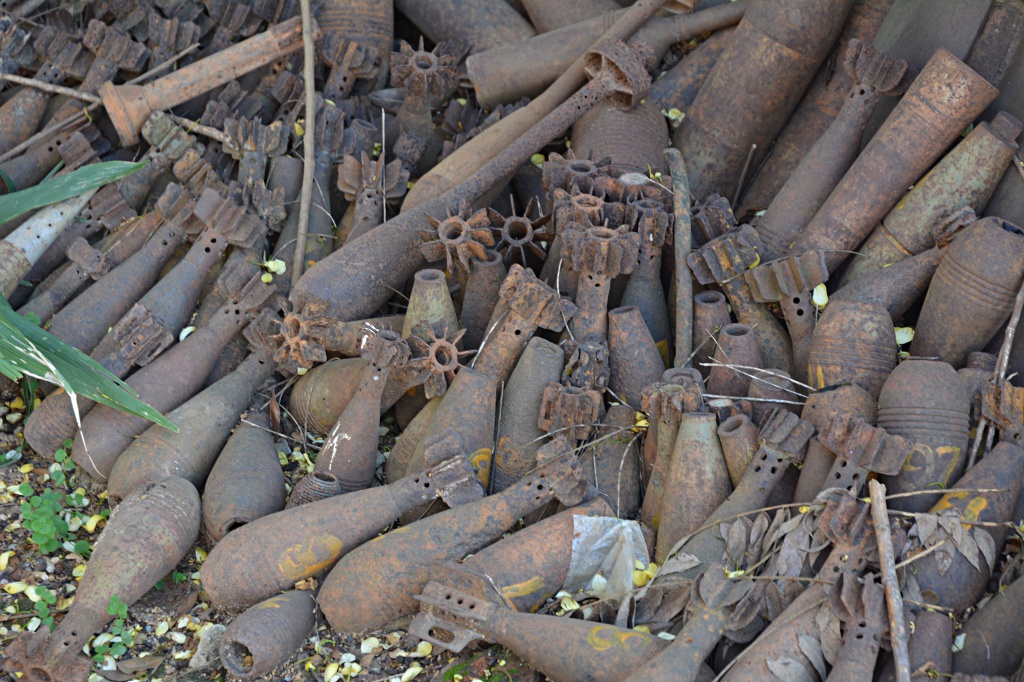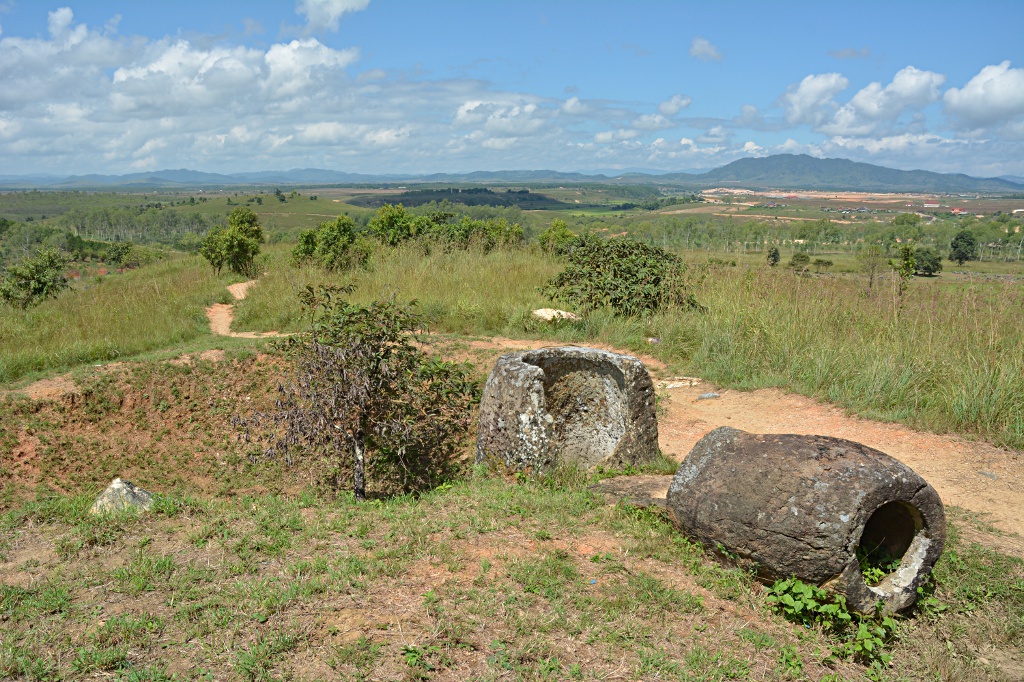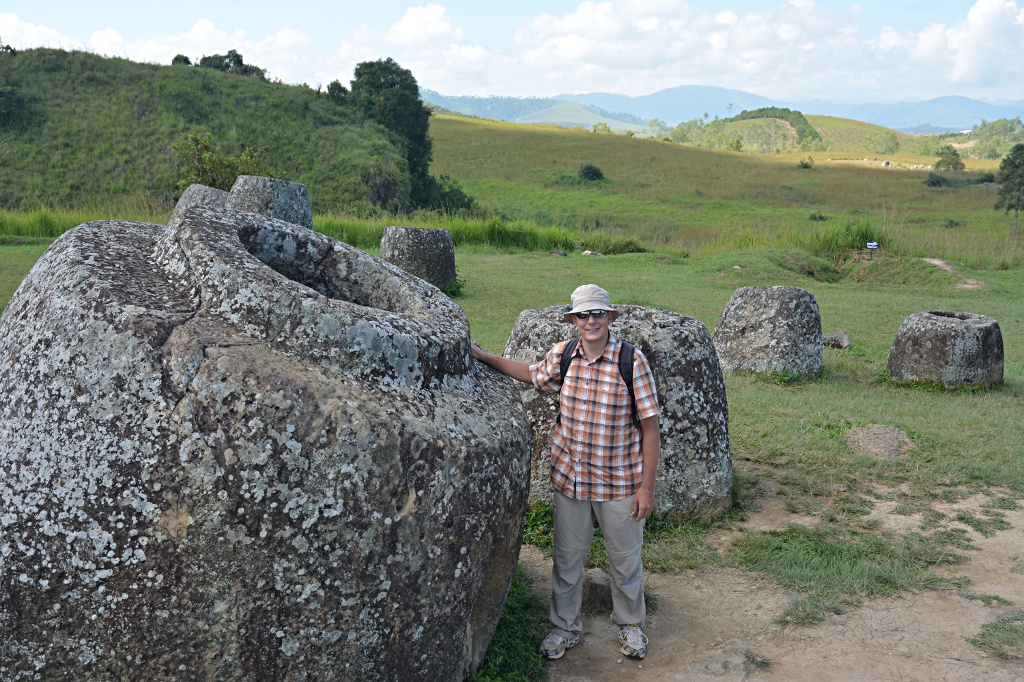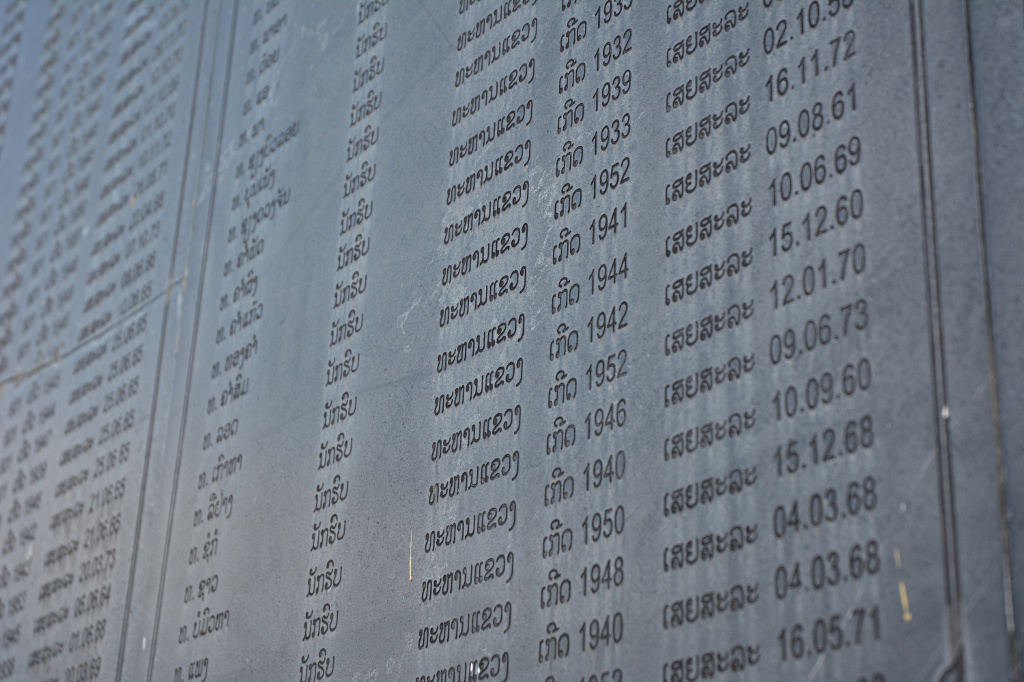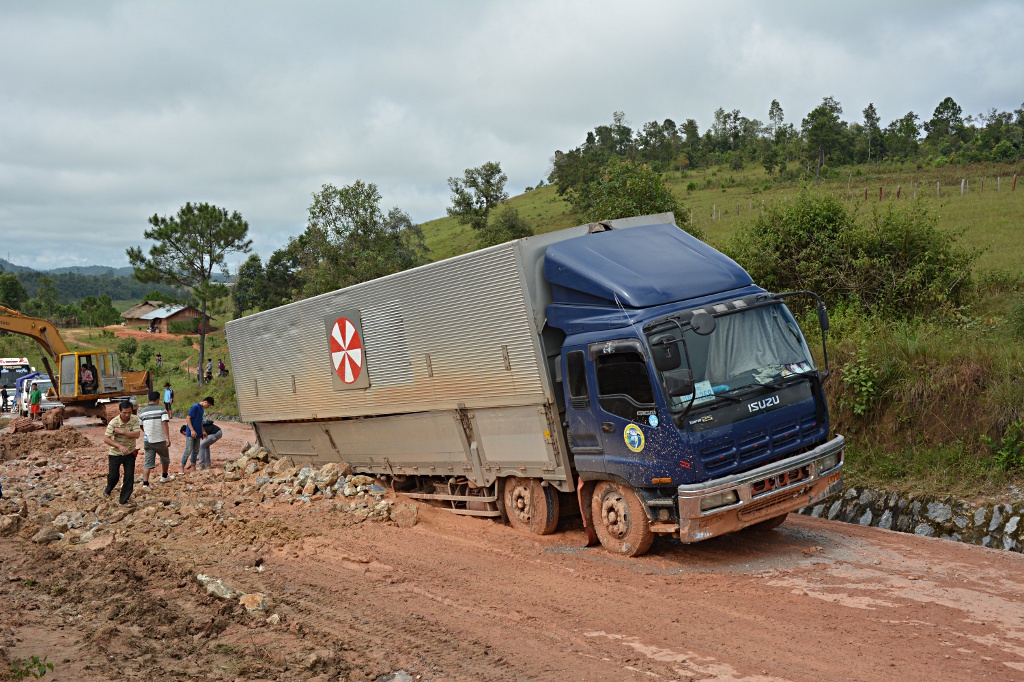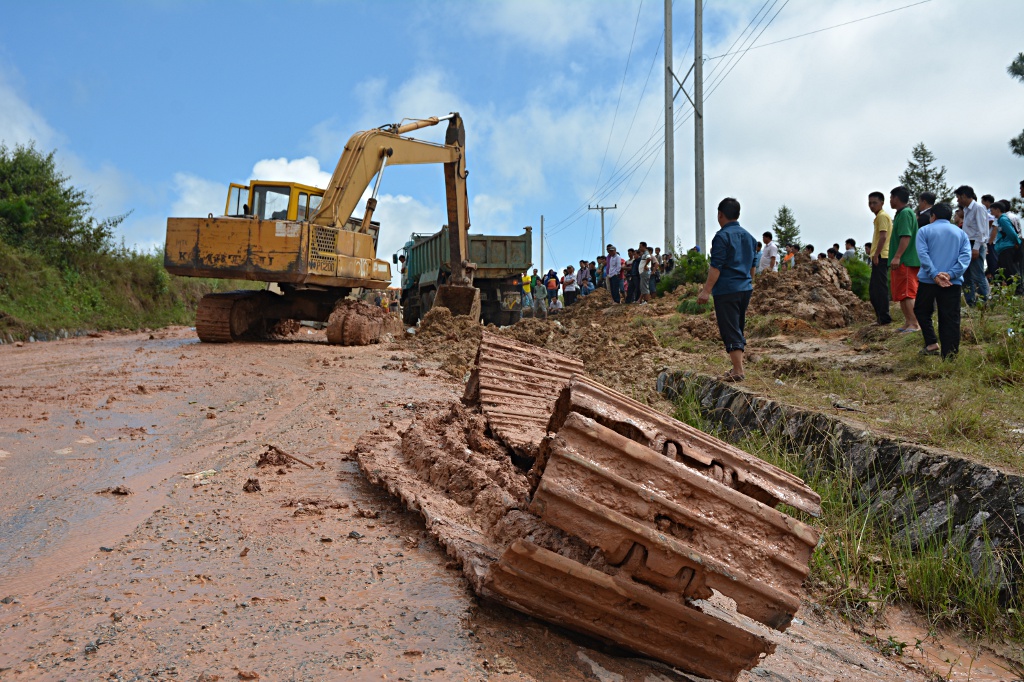After the very well visited and beautiful city of Luang Prabang we headed out to a much more tragic chapter of Laotian history: the plateau around Phonsavan not only contains 2500 years of history which has yet to be understood but also was a central place of action during the second Indochina war. Still today the war is an everyday topic since the population still suffers from the consequences of the war which was over more than 40 years ago. From Phonsavan we continued to Vang vieng, the mecca of all backpackers is located in a magificient carst landscape and until recently was the alcohol and drug capital of Laos.
Following our lesson learned about buying bus tickets through travel agents in Luang Namtha we decided to challenge our luck in Luang Prabang. Asking through travel agencies we identified departure times and bus station of the buses to Phonsavan. Just before 7 am we tied our shoes in front of our guesthouse and were approached by a tuk-tuk driver. He offered us a reasonable price so without much ado we hopped onto his tuk-tuk and were on the way to the bus station. Once at the bus station we had no issues to buy the desired tickets to Phonsavan. The whole exercise saved us enough money for a decent dinner in Laos compared to buying through a travel agent.
The next chapter for local bus transport was awaiting us. This mode of transport is said to be the cheapest, slowest and most uncomfortable in Laos. On the other hand side it is one of the options which is also used by the locals who often can not afford the expensive express, VIP and minibuses. What else it could mean to travel by local bus, we discovered on the road.
Typically breaks are very rare in Laos, however the driver of our bus granted us a first toilet and smoking break way before lunch time. The reason wasn’t his kindness but much rather that the bus had some issues. While the engine sounded alright, there likely was an issue with the hydraulic system. During the 8 hour ride which took 10 hours, the driver stopped 4 times for repairs and tried to drive the last 50 km in one single gear using the handbrake only for slowing down. We sighed a sigh of relieve once we pulled up to the bus station of Phonsavan and tried to figure out where exactly in town we had landed. Sending the only tuk-tuk on its way turned out to be a mistake, since the bus station is located about 3 km outside of town and no other tuk-tuk was anywhere in sight. We set off on foot and were fortunate enough to soon be picked up by another tuk-tuk who brought us into town for a fair price.
We were dropped of right in front of a guesthouse and inquired for free rooms. The rooms were good quality, but we were hoping for a slightly better price. Our tour around the block did not bring up anything better so we decided in this one guesthouse. The owner was also kind enough to offer us a tour around the Plain of Jars for the next day for a reasonable price.
The city of Phonsavan is located on one of the axes between Laos and Vietnam, which results in a quite a mixed city. There are not only Lao and Vietnamese, but also Chinese and Indian traders, guesthouses and restaurants. The town has a border-town feel even though the Vietnamese border is still a 4 hour bus-ride away. The restaurant where we had dinner was one that also fit the description of truck-stop restaurant with mediocre quality of food.
The breakfast at the Indian restaurant was amazing probably because it took quite a while to prepare. With well filled stomachs we headed out to discover the Plain of Jars. The tour started in the visitor center in Phonsavan where we learned quite a bit about the plateau and its history. Particulary impressive was all the remains from the second Indochina war, which was piled up in front of the visitor center. Unexploded ordonance (UXO) still caused 22 explosions in 2013 in the Xieng Khoung province, injuring and killing 50 people. While the cities and the roads are cleared of mines and bombs, this is not the case for the fields and the forests where the local people work and hunt.
Besides this tragic chapter Phonsavan had to offer a quite stunning story which is the Plain of Jars. Up to man sized jars carved from the granite rock are spread out all over the plateau. While archeologists are sure that thes stone jars are about 2500 years old, their purpose is not yet fully clear. While the saying among locals goes that giants about 20 meters tall used to populate the area and used them cups we could only smile at the story. The archeologists’ explanation is that the stone jars were used as urns for the remains of the deceased. While this sounds more plausible it still is not the final answe which has yet to be found.
We visited the Jar sites 1, 2 and 3. Only 6 of the several dozens sites have been completely cleared of UXOs. The local authorities hope to have all of the cleared by the time the new airport opens in 2020, big plans for a small town. We learned a lot about bomb craters, UXOs and jars, such that we had definitely earned a good dinner after a short visit of the town, the war memorial and the town market.
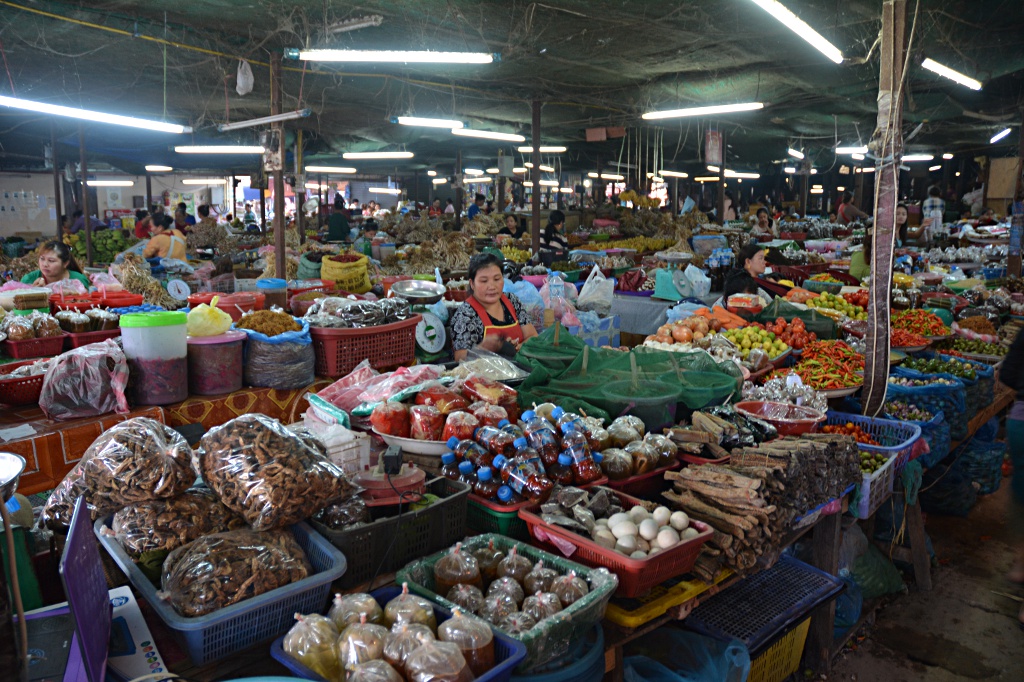
Phonsavan market in full swing. Offering from squirrels to bee larvae to chicken and everything else
Another long bus trip awaited us the next day: six hours by minibus should take us from Phonsavan to the village of Vang Vieng. Already half an hour into the ride we stopped though. The road was blocked by a truck which had gotten stuck in the mud the night before. Tons of people were busy watching the excavator at work placing big rocks in the mud around the truck to build a makeshift road. The plan seemed to be to get traffic going first and then recover the truck later. To add insult to injury the excavator lost one of its (Raupe) such that the driver had to use the shovel to move around, which he did in a very professional manner. It seems he had not been doing this the first time. As part of the lucky ones we could continue our trip after waiting for only about half an hour while the traffic to Phonsavan had been stuck in the place since the night before and still had to wait.
The minibus flew across the windy and bumpy road almost twice as fast as the local bus two days earlier. It had taken us 5 hours from the turn off to Vientiane on the local bus, but this time we reached it in under 3 hours. The results was well shaken bodies and slightly dizzy heads. The poor local sitting on the rear bench was lucky enough to bring a small bag of which he could make use before getting off.
Around 3 pm we reached Vang Vieng bus station and found yet again a tuk-tuk to bring us into town. We have established our method in finding accomodation by just dropping into places, asking to see the room and the price and make a decision whether we take it or not. We feel that this way is more efficient than trusting in an outdated tourist guide book which is used by almost every traveler which then all pack into the same places. Our two young Durch fellow traveler were very much glued to their guidebook, such that while we headed off for a quick swim in the cave spring in the Vang Vieng Resort, they were still running around town with red heads trying to find a place to stay. Sometimes it’s a good thing to put the guidebook aside and just follow your nose…
Unfortunately we had to scrap our plan to make some of the distance to Vientiane on Monday by kayak, since no other people were interested in joining. For two people the tour simply was prohibitevly expensive. Our worst fears of finding mostly partying, drugged and drunk backpackers fortunately did not materialize, with the odd exception thrown in. The measures of the local government which now strictly regulates the tourist industry apparently shows a very positive effect and also gives the locals a little more piece and quite. The village is beautifully set and apparently still has to manage a major influx of tourists, but seems to handle those well.
On Monday morning we finally left Vang Vieng for Vientiane, the capital of Laos, by VIP bus.

